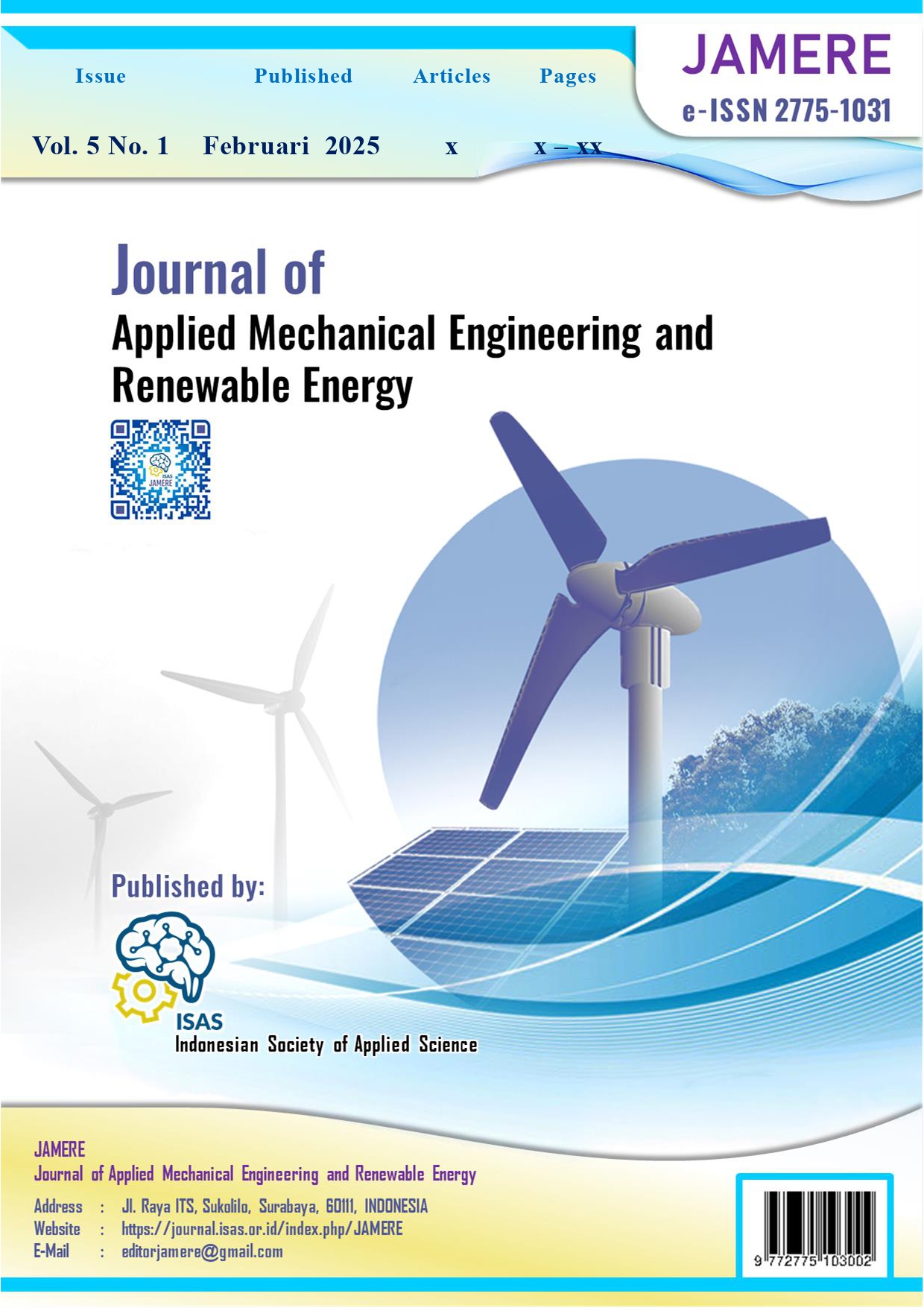Pengaruh Jenis Pahat Terhadap Nilai Kekasaran Permukaan Material Baja Carbon S45C
I will put the dimension here
Abstract
In the turning process, the surface finish of a workpiece can influence the level of visual quality of a workpiece. CNC machine cutting parameters include feed speed, feed depth, and cutting speed. The aim of this research is to determine the effect of carbide insert tool types ZCC WNMG 060408 – DM and VBMT 160408 – HM on the average roughness value in the turning process with a rotational speed of 500 rpm and feed speed variations of 0.10 mm/rev, 0.15 mm/ rev and 0.20 mm/rev on S45C steel material. This research is located at PT. Bin Smeer Jaya with the research sample, namely S45C steel material. This research will be carried out with 3 samples of surface roughness testing each with varying feeding, where the turning process will be carried out on a CNC lathe machine first using ZCC WNMG 060408 – DM and VBMT 160408 – HM carbide insert chisels. The desired roughness standard is 1.8 µm – 2.2 µm. Based on the results of testing the surface roughness value of S45C steel material, the data obtained using the Handysurf E-35 surface roughness measurement tool, the roughness value using the ZCC WNMG 060408 – DM specimen 3 feeding 0.20 mm/rev carbide insert chisel was 2.38 µm, whereas for specimen 3 feeding 0.10 mm/rev is 4.11 µm. Then for the VBMT 160408 – HM carbide insert chisel, specimen 1 feeding 0.10 mm/rev is 1.48 µm, while for specimen 2 feeding 0.20 mm/rev it is 4.41 µm. So it can be concluded that the lowest roughness value occurs in the VBMT 160408 – HM carbide insert chisel compared to the ZCC WNMG 060408 – DM carbide insert chisel type. Therefore, the best level of surface roughness results occurs in the VBMT 160408 – HM carbide insert with the desired roughness standard and optimal visual quality
References
T. Hidayat and B. A. Hasyim, "Pengaruh Kedalaman Pemakanan Jenis Pendingin dan Kecepatan Spindle Terhadap Kekasaran Permukaan Benda Kerja Pada Proses Bubut Konvensional," Jurnal Teknik Mesin, vol. 1, no. 1, pp. 62-67, 2015.
A. Fauzi and W. Sumbodo, "Pengaruh Parameter Pemakanan Terhadap Kekasaran Permukaan ST 40 Pada Mesin Bubut CNC," Jurnal Dinamika Vokasional Teknik Mesin, vol. 6, no. 1, pp. 46-57, 2021.
M. Nopiansyah and E. Zulfitriyanto, "Pengaruh Kecepatan Spindle dan Kedalaman Pemakanan Terhadap Kekasaran Permukaan Pemesinan Bubut CNC Baja ST 41," Jurnal Syntax Admiration, vol. 2, no. 7, pp. 1308-1316, 2021.
A. Mashudi and N. A. Susanti, "Pengaruh Media Pendingin dan Kecepatan Putar Spindle Terhadap Hasil Permukaan Benda Kerja Pada Proses Finishing Menggunakan Mesin Bubut PU," Jurnal Pendidikan Teknik Mesin, vol. 9, no. 3, pp. 57-66, 2020.
B. Siswanto and Sunyoto, "Pengaruh Kecepatan dan Kedalaman Potong Pada Proses Pembubutan Konvensional Terhadap Kekasaran Permukaan Lubang," Jurnal Dinamika Vokasional Teknik Mesin, vol. 3, no. 2, pp. 82-86, 2018.
K. Sutrisna, I. N Pasek Nugraha and K. Rihendra Dantes, "Pengaruh Variasi Kedalaman Potong dan Kecepatan Putaran Mesin Bubut Terhadap Kekasaran Permukaan Benda Kerja Hasil Pembubutan Rata Pada Baja ST 37," Jurnal Jurusan Pendidikan Teknik Mesin Undiksha, vol. 5, no. 3, 2017.
S. Kalpakjian and S. R. Schmid, Manufacturing Processes for Engineering Material Fifth Edition, New Delhi, India: Pearson Education in South Asia, 2014.
A. Mardiansyah, "Analisis Kekasaran Permukaan Benda Kerja Dengan Variasi Jenis Material dan Pahat Potong," Program Studi Teknik Mesin Fakultas Teknik Universitas Bengkulu, pp. 1-14, 2014.
R. S. Budi and H. Dwipayana, "Analisa Kekasaran Permukaan Material Alumunium Pada Proses Pembubutan Dengan Mesin Bubut BV 20," Jurnal Teknik, vol. 6, no. 2, pp. 248-256, 2000.
Copyright (c) 2025 ezaldy, Budha Maryanti , Fransye Joni Pasau

This work is licensed under a Creative Commons Attribution 4.0 International License.














